Aerospace’s early years were defined by the ambitious projects that are now synonymous with the early days of space exploration. As one of its first projects, the corporation helped convert the Atlas, Titan, and Minuteman missiles into space boosters. Aerospace helped develop the pilot safety program for Project Mercury, which improved the reliability of the Atlas launch vehicles and helped ensure the safety of the astronauts.
Along with working on verification guidance equations, factory inspections, and final launch stand verifications at Cape Kennedy, Aerospace was part of the team involved in man-rating CLV-1, the first Gemini launch vehicle. Aerospace also helped to support the first manned Gemini flight—a five-hour mission carried out by astronauts Gus Grissom and John Young.
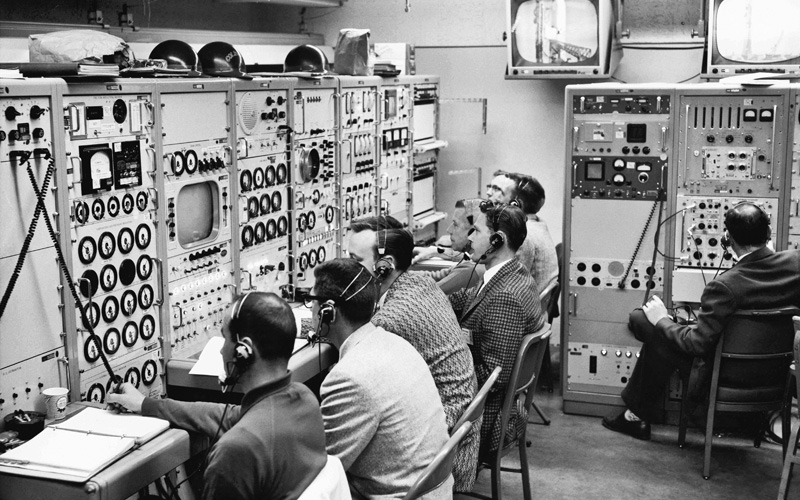
The corporation worked on some of the earliest space-based reconnaissance programs, including Discoverer and Corona, both of which were satellite programs designed to take photos from space. Aerospace also began working on in Project 621B, a precursor to the GPS program.
During the early years, the company’s first president, Dr. Ivan Getting, set the tone for many of the corporate values that are still central to Aerospace’s culture. Getting placed a high value on objectivity and technical excellence, and he recognized that Aerospace’s employees were the talent that was central to the corporation’s success.
Aerospace Expands Its Reach
At the close of the 1960s, with the moon landing accomplished, the tenor at Aerospace shifted. Aerospace continued to play an important role in space, but the corporation also began to expand its work in the civil and commercial sectors. The corporation tackled projects in fields ranging from medicine and transportation, to energy and the environment. During this time, Aerospace also did work for the Law Enforcement Assistance Administration, including important research on body armor that aided in the development of Kevlar for use in bulletproof vests.

Aerospace provided critical support to the Department of Energy’s Strategic Petroleum Reserve program in the late 1970s. The aim of the project was to create a store of petroleum that would protect the country against disruptions in the oil supply.
Another large project that Aerospace helped to tackle in the 1970s was the development and operation of the space shuttle. As this ambitious project ramped up, data obtained in Aerospace’s analyses was incorporated into the design specifications. Among other things, the corporation helped to determined how large the vehicles’ cargo bay needed to be and the necessary payload capacity, it helped create a design for a device that would measure slight deformations that arose from uneven solar heating of the orbiter’s structure, and it also helped to test and evaluate the shuttle to make sure that it would meet the Air Force’s requirements.
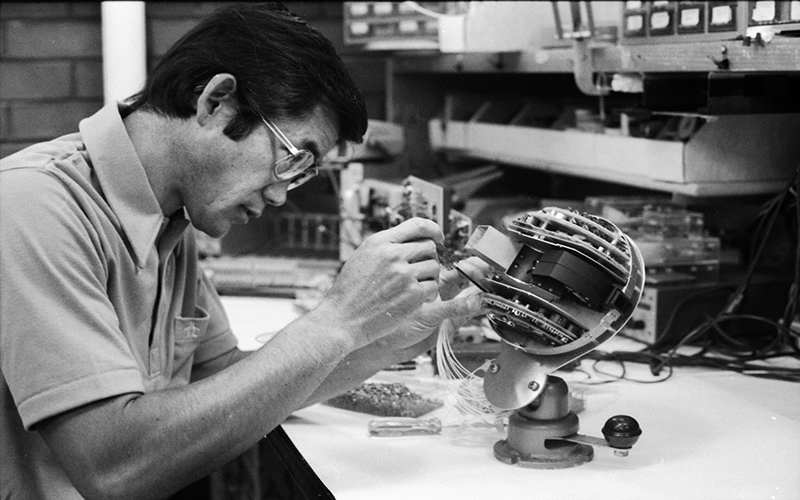
Aerospace was also involved with President Ronald Reagan’s Strategic Defense Initiative (SDI), popularly known as Star Wars. In the early 1980s, SDI was conceived as a way to protect the United States from nuclear ballistic missile attacks using ground-, air-, and space-based systems.
Aerospace played an important role in developing many technological components of SDI: surveillance and radar, satellite autonomy, survivable systems (a system’s ability to withstand attacks or other adverse circumstances), thermal control, tribology (the study of friction, wear, and lubrication between surfaces), magnetosphere physics, electronics, and hypergolic propellant handling.
The Global Positioning System
During the Persian Gulf War of 1991, GPS first received widespread publicity. Though not fully operational at the time, the system had a significant impact on military operations, enabling allied forces to coordinate their movements in the featureless Iraqi desert and achieve a rapid victory with a minimum of casualties.
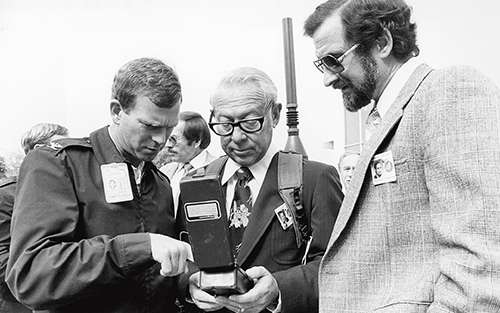
Just over a decade later, GPS was used with similar success in the war in Afghanistan, a country renowned for its difficult terrain. Although the development of GPS can be traced back to the military demands of the Cold War era, it has gone far beyond its initial defense applications and now extends into the daily lives of millions of civilians, who use it for commercial, recreational, and educational purposes.
In 1992, as a member of the GPS team, Aerospace shared the nation’s most prestigious aeronautical award, the Collier Trophy. The citation accompanying the award called GPS “the most significant development for safe and efficient navigation and surveillance of air and spacecraft since the introduction of radio navigation 50 years ago.”
The award was a capstone to three decades of difficult development work, remarkable innovation, and tireless advocacy by Aerospace personnel, often at a time when only a handful of people recognized the system’s enormous potential.
Accelerating Space Exploration and Shaping Space Policy
Echoing its impact on GPS, Aerospace expanded its innovation and technical excellence across the space domain with its contributions to the development of small satellites. In addition, Aerospace played a key role in the development of the Evolved Expendable Launch Vehicle (EELV) program, making government space launches more affordable and reliable. Now known as National Security Space Launch (NSSL), the program provides assured access to space, delivering critical space capabilities to support the warfighter.
In the early 2000s, space exploration experienced a resurgence with missions like the Mars Exploration Rovers, Spirit and Opportunity. Aerospace was instrumental to their success, providing expert risk assessment, mission assurance, systems engineering, and comprehensive support during launch and throughout the Rovers’ operational life.
Driving Innovation and Security in Space
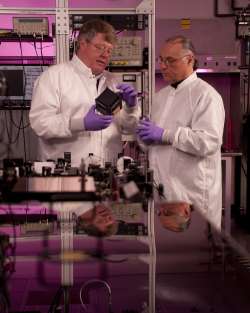
During the 2010s, Aerospace continued to play a pivotal role in fostering commercial space collaboration, broadening its impact and driving innovation and partnerships that advance the industry to this day. The corporation continued its decades-long role in the evolution of small satellites, such as CubeSats, and advanced propulsion technologies—tools that have since become indispensable for scientific research, commercial innovation, and national security.
The decades’ increasingly crowded space domain prompted Aerospace to establish the Center for Orbital and Reentry Debris Studies (CORDS), leveraging its support to the Space Surveillance Network (SSN) from the previous decade to improve the tracking and management of space traffic, and develop predictive models for its movement and impact.
Alongside these efforts, Aerospace ensured the reliability and resilience of critical national security space systems, including the Wideband Global SATCOM (WGS), the Advanced Extremely High Frequency (AEHF) constellation, and the Space Based Infrared System (SBIRS). Through its support to these programs, Aerospace has advanced U.S. strategic capabilities and reinforced national security, while also contributing to global security by enhancing the operational effectiveness and security of the U.S. and its allies around the world. Today, these systems remain indispensable to national defense and vital to the operational effectiveness of the warfighter.
Shaping Space Policy for a Dynamic Space Domain
In the 2020’s, space has become increasingly contested, congested, and recognized as a warfighting domain, prompting the establishment of the U.S. Space Force. Aerospace has steadfastly supported the U.S. Space Force, utilizing its extensive expertise in space systems and policy to advance this crucial initiative.

Aerospace extended its legacy by assisting with the certification of a new generation of rockets, including the Falcon 9, Falcon Heavy, and Vulcan Centaur systems, enhancing space technology with improved reliability, payload capacity, and cost-effectiveness.
Aerospace recognizes the crucial role of space policy in creating frameworks and guidelines for sustainable and secure space operations, commercial collaborations and international partnerships. Through its Center for Space Policy and Strategy (CSPS), Aerospace continues to provide expert analysis and strategic recommendations to U.S. leadership, guiding government and commercial entities in navigating the evolving space environment.
Aerospace is expanding to meet rising demand, with a new Space Warfighting Center in Colorado Springs, Colo., ongoing improvements to its state-of-the-art technology campus in El Segundo, Calif., and a Chantilly, Va. headquarters that positions leadership closer to key Washington, D.C. customers and stakeholders.
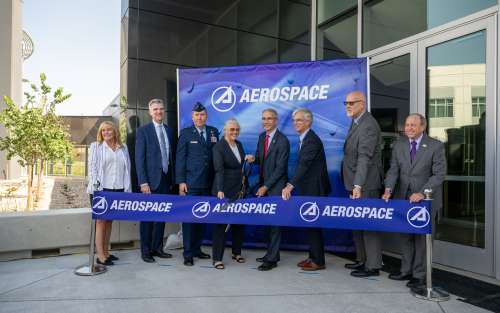
Building upon its legacy of advancements to space traffic management, Aerospace has leveraged its expertise to develop and implement the Traffic Coordination System for Space (TraCSS) to address the increasing complexities of space congestion and ensure the long-term safety and sustainability of space operations.
In space exploration, Aerospace remains deeply involved in landmark initiatives like NASA’s Artemis program, which aims to return astronauts to the Moon and lay the groundwork for future missions to Mars. The corporation is contributing to critical systems—including lunar landers and habitats—that will be essential for sustaining long-term human presence beyond Earth.
Building for the Future
Aerospace continues to enable new possibilities for space by fostering government and commercial partnerships, supporting NASA’s James Webb Space Telescope and Mars Exploration Curiosity and Perseverance missions, and advancing asteroid science through key missions like OSIRIS-REx, Psyche, Lucy, and DART. In 2024, Aerospace was chosen to lead the Consortium for Space Mobility and ISAM Capabilities (COSMIC), uniting various sectors to advance critical in-space servicing, assembly, and manufacturing technologies.
Throughout these efforts, Aerospace has continued to evolve and adapt how it supports the nation’s space enterprise, finding ways to align commercial innovation with government mission needs for national security.
Through mission-critical analysis, systems engineering, and rapid innovation, Aerospace advances the nation’s superiority in space, enabling partners to meet current demands and prepare for the challenges of tomorrow.

